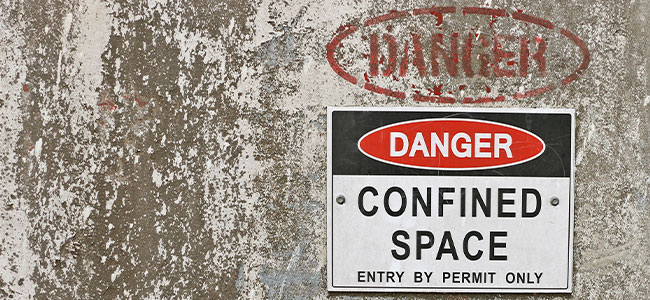Safety Training: How to Prepare Workers for Confined Spaces While Working Alone
Effective safety training strategies are essential for prioritizing worker safety in confined spaces, particularly for those working alone.
There are dangerous, confined spaces everywhere, even where no one would know it. They exist above, below and around us in common areas such as pipelines, sewers, tankers, tunnels, storage bins and maintenance holes, where people may be required to perform work and tasks in these segregated spaces.
OSHA describes confined spaces in an occupational context as areas that may not be “necessarily designed for people, [but] they are large enough for workers to enter and perform certain jobs.” This means that a confined space is not necessarily physically small but is defined by how the entryway and exits are restricted or limited to the employee.
Why It’s Dangerous
When working in confined spaces, people are at risk of various potential hazards, making them a challenge to address and thoroughly mitigate properly. From 2011 to 2018, more than 1,000 workers died from occupational injuries involving a confined space.
Atmospheric hazards include toxic gases or fumes, explosive gases and a lack of adequate oxygen for those working in that space. Working in confined spaces where oxygen levels are low can impair judgment, result in dizziness and fatigue, and cause the worker to collapse, leading to other serious injuries if they’re alone when they pass out.
Engulfment of collapsing materials is a significant hazard when working in confined spaces such as tanks, vats and grain silos. Employees can be engulfed, buried or drowned in materials like water and liquids, grain and seed, and loose soil and sand. If working in these spaces alone, they may be unable to get help and access a safe place.
The threat of trench collapses is another significant risk when performing work in confined spaces, particularly in the construction industry, which experienced 168 deaths from 2011 to 2018 from this specific type of event and accident. This can occur when the trench walls are not adequately stabilized, benched or sloped, and any equipment or excess soil or debris is improperly stored near the edge of the trench, causing it to collapse.



